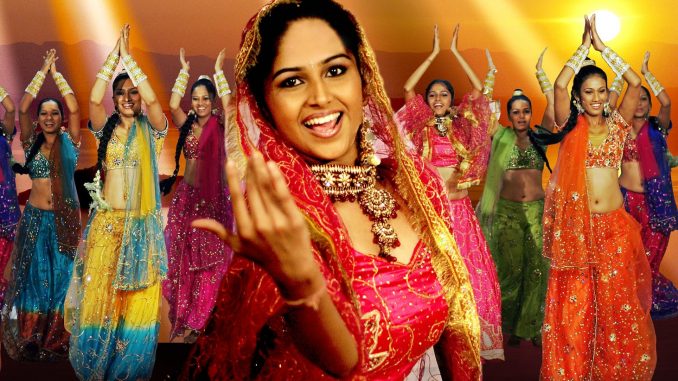
The Bollywood-inspired box office underdog, “Slumdog Millionaire,” recently grabbed headlines all over the world when it racked up eight Academy Awards including those for Best Picture and Best Director. Slumdog director Danny Boyle admits that the film was directly inspired by at least three Bollywood films. Critics and viewers can only agree. The colourful dance sequence towards the end of the film where Jamal and his beloved Latika break out into a dance at the train station is nothing if not pure Bollywood. The question is: What makes Bollywood movies tick?
Hypnotic rhythms and dance moves
You’ve got it – it’s all about rhythm and dance. Bollywood films often showcase dance moves that are inspired by traditional Indian dance. Dance sequences in recent years have become a mesh of classical and folk Indian dance styles and MTV- or Broadway-type Western choreography. Mesmerizing and trance-inducing music usually accompanies Bollywood dance sequences. The usual formula is that of the movie’s hero and heroine, often dressed in colourful, elaborate costumes, leading a troupe of supporting dancers in a song-and-dance routine that is both pop and classical at the same time.
The pizzazz and hooplah featured in many scenes
These days, Bollywood films are usually filmed overseas and the dialogues use Indian English liberally, though scripts are generally written in Hindustani to reach the largest possible audience. Once in a while, regional dialects are used to recreate a village or historical setting. Regardless of the dialect used, Bollywood dialogues or song lyrics are often melodramatic and over-the-top, invoking God, family, mother, duty, and self-sacrifice. In fact, Bollywood – “the cinema of excesses” – is nothing if not pure melodrama and music. Bollywood movies are so popular because their larger-than-life imagery, characters, fantasies, and dreams provide an escape from the monotony of daily living in a country mired by poverty and despair.
Western films inspired by Bollywood musicals
Although India has been producing movies since the early part of the 20th century, Bollywood films broke out into the world movie scene and began to influence Western cinema only in the last ten years or so. In 2001, Nicole Kidman and Ewan McGregor top-billed Moulin Rouge, a highly acclaimed Hollywood musical. Director Baz Luhrmann did not deny that Moulin Rouge was directly inspired by Bollywood musicals. The film even incorporated an Indian-themed play based on an ancient Sanskrit drama as well as a Bollywood-style dance sequence.
Inspired by the critical and financial success of Moulin Rouge, other Hollywood producers soon followed suit and found a renewed interest in the Western musical genre. Many ventured into producing films such as “The Phantom of the Opera,” “Rent,” “Hairspray,” “Dreamgirls,” and “Mamma Mia!”
In an increasingly globalized world, it’s not surprising that cultures have begun to mesh and forms of creative expression have started to mirror each other across the globe. Bollywood is not only an art form; it is also a living testament to the tie that binds all of humanity through song and dance.

Leave a Reply